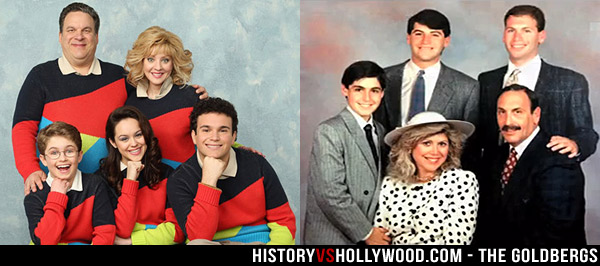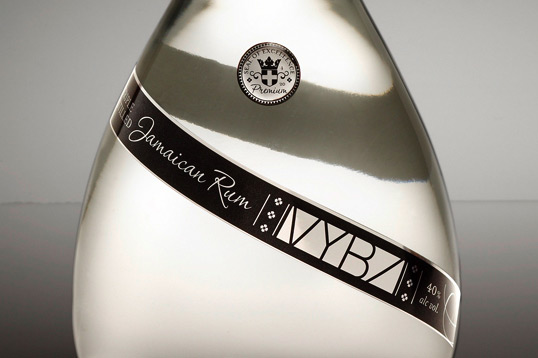The Goldbergs: Comparing The Show To Real 80s Family Dynamics

Table of Contents
Millions are captivated by The Goldbergs, a sitcom that expertly mines the nostalgia of 1980s family life. But how accurately does this beloved show reflect the realities of families during that decade? This article delves into The Goldbergs, comparing its depiction of family dynamics to the actual experiences of those who lived through the 1980s.
<h2>Family Structure and Roles in The Goldbergs vs. the Real 1980s</h2>
The Goldbergs centers around the Goldberg family, showcasing a specific family structure prevalent in the 1980s. Let's examine the key roles and compare them to societal norms of the time.
<h3>The Patriarchal Figure: Murray Goldberg</h3>
Murray Goldberg, the gruff but ultimately loving patriarch, embodies a certain type of 1980s father. While he exhibits the traditional provider role, his character also displays a softer side, contrasting with the sometimes distant father figures often depicted in media.
- Murray's gruff exterior vs. underlying love: The show masterfully balances Murray's tough demeanor with moments of undeniable affection for his family. This nuanced portrayal adds depth to the typical "stern father" archetype common in 80s sitcoms.
- The prevalence of stay-at-home mothers in the 80s: Beverly Goldberg's role as a stay-at-home mother is a reflection of the societal expectation for women during the 1980s. While many women worked outside the home, the stay-at-home mother was still a common image.
- Comparison to other sitcom dads of the era: Compared to other sitcom dads of the 80s, Murray’s character offers a more complex and multifaceted portrayal, moving beyond the simple comedic trope.
<h3>Mother's Role and Influence: Beverly Goldberg</h3>
Beverly Goldberg, the energetic and overbearing matriarch, is a far cry from the passive mother figures often seen in older television shows. While her methods are sometimes questionable, her unwavering love and dedication are undeniable.
- Overbearing yet loving: Beverly’s character is a fascinating study in 80s motherhood. Her intense involvement, while sometimes comical, reflects a generation of mothers heavily invested in their children's lives.
- The pressure on mothers in the 80s: The pressure on mothers to be perfect homemakers and caregivers is subtly explored through Beverly's character, reflecting the social pressures of the era.
- Differences in parenting styles then and now: Comparing Beverly's parenting style to modern approaches highlights the evolution of child-rearing philosophies over the decades. Her methods, though sometimes extreme, were not uncommon for the time.
<h3>Sibling Relationships and Dynamics: Adam, Barry, and Erica</h3>
The sibling dynamics between Adam, Barry, and Erica Goldberg resonate with many who experienced the typical sibling rivalries and bonds of the 1980s.
- Competition: The Goldberg siblings frequently compete for attention, resources, and parental approval, a common theme in families regardless of era.
- Rivalry: Classic sibling rivalry is a key element of the show, highlighting the inevitable clashes and conflicts between brothers and sisters.
- Support: Despite their disagreements, the siblings ultimately demonstrate a strong bond of support and loyalty, demonstrating the complexity of sibling relationships.
- Comparing the show's portrayals to real-life accounts and studies: Psychological studies on sibling relationships corroborate many of the dynamics portrayed in The Goldbergs, lending credibility to the show’s depiction of family life.
<h2>Technological and Cultural Influences on Family Life in The Goldbergs</h2>
The Goldbergs effectively captures the technological and cultural shifts that shaped family life in the 1980s.
<h3>The Impact of Emerging Technologies</h3>
The show cleverly integrates the impact of emerging technologies like VCRs, video games, and the burgeoning home computer revolution on family dynamics.
- Family time spent with technology: The Goldbergs' interactions with these new technologies showcase how they both brought families together and created new avenues for individual pursuits.
- The novelty of new gadgets: The show reflects the excitement and wonder surrounding new technologies during this period, illustrating the transformative power of technological advancements.
- The role of technology in shaping family interactions: The Goldbergs subtly reveals how the introduction of new technologies influenced family communication, leisure activities, and relationships.
<h3>Cultural Trends and their Reflection in the Show</h3>
The show successfully incorporates many cultural trends of the 1980s, enhancing the nostalgic appeal for viewers.
- Music references: The soundtrack of The Goldbergs is a treasure trove of 80s music, perfectly capturing the era's musical landscape.
- Clothing styles: The characters' attire accurately reflects the fashion trends of the decade, from leg warmers to big hair.
- Social and political issues of the time and how the show addresses them: While not the primary focus, the show occasionally touches upon social and political issues of the 1980s, adding layers of context.
- Accuracy of the depiction: The show’s dedication to capturing the aesthetics and cultural nuances of the 1980s contributes significantly to its authentic portrayal of the era.
<h2>Accuracy and Exaggeration in The Goldbergs' Depiction of the 80s</h2>
The Goldbergs expertly blends realistic elements with comedic exaggeration to create a compelling narrative.
<h3>Balancing Realism and Comedy</h3>
The show walks a fine line between accurate representation and humorous exaggeration.
- Situational comedy vs. accurate representation: While comedic situations are often heightened for entertainment, the underlying family dynamics and cultural context remain largely consistent with the realities of the 1980s.
- The use of stereotypes: The show occasionally utilizes stereotypes, but often subverts or complicates them, preventing the portrayal from becoming overly simplistic or offensive.
- The show's artistic license: Like any sitcom, The Goldbergs takes creative liberties, prioritizing humor and storytelling over strict historical accuracy.
<h3>Nostalgia and the Modern Viewer's Perspective</h3>
The show’s appeal lies partly in its ability to evoke nostalgia among viewers who grew up in the 1980s, while also providing relatable characters and family dynamics for younger audiences.
- Appeal to a broader audience: The combination of nostalgia and relatable characters ensures a broad appeal across age groups.
- The power of nostalgia: The Goldbergs cleverly uses nostalgia as a vehicle for storytelling, connecting with viewers on an emotional level.
- Creating relatable characters despite the time gap: Despite the show's 1980s setting, the characters and their relationships remain surprisingly timeless, resonating with audiences regardless of their generational background.
<h2>Conclusion: The Goldbergs: A Nostalgic Look at 80s Family Life</h2>
In conclusion, The Goldbergs provides a fascinating, if somewhat stylized, glimpse into 1980s family life. While certain aspects are exaggerated for comedic effect, the show captures many key elements of family structure, relationships, and the cultural landscape of the era. The balance between realistic portrayal and comedic embellishment makes The Goldbergs a successful and engaging nostalgic trip for viewers of all ages.
Did you grow up in the 1980s? Share your thoughts on how The Goldbergs reflects – or doesn’t reflect – your family experiences in the comments below! Let's discuss The Goldbergs and its portrayal of 80s family life.

Featured Posts
-
 Kartel And Rum Culture A Stabroek News Perspective
May 21, 2025
Kartel And Rum Culture A Stabroek News Perspective
May 21, 2025 -
 Peppa Pigs Parents Throw Gender Reveal Party A Look Inside
May 21, 2025
Peppa Pigs Parents Throw Gender Reveal Party A Look Inside
May 21, 2025 -
 Indias Impressive Showing 19 Paddlers At Wtt Star Contender Chennai
May 21, 2025
Indias Impressive Showing 19 Paddlers At Wtt Star Contender Chennai
May 21, 2025 -
 3 Laebyn Jdd Fy Qaymt Mntkhb Alwlayat Almthdt Alamrykyt Bqyadt Bwtshytynw
May 21, 2025
3 Laebyn Jdd Fy Qaymt Mntkhb Alwlayat Almthdt Alamrykyt Bqyadt Bwtshytynw
May 21, 2025 -
 The Goldbergs Exploring The Shows Humor And Heart
May 21, 2025
The Goldbergs Exploring The Shows Humor And Heart
May 21, 2025
Latest Posts
-
 Dexter Resurrection Das Comeback Der Kultfiguren
May 21, 2025
Dexter Resurrection Das Comeback Der Kultfiguren
May 21, 2025 -
 The Curious Case Of Gumball A Look At Upcoming Episodes
May 21, 2025
The Curious Case Of Gumball A Look At Upcoming Episodes
May 21, 2025 -
 Die Rueckkehr Von Dexter John Lithgow Und Jimmy Smits
May 21, 2025
Die Rueckkehr Von Dexter John Lithgow Und Jimmy Smits
May 21, 2025 -
 Funko Unveils Official Dexter Pop Vinyl Figures
May 21, 2025
Funko Unveils Official Dexter Pop Vinyl Figures
May 21, 2025 -
 Dexter Kehrt Zurueck Lithgow Und Smits In Ihren Kultrollen
May 21, 2025
Dexter Kehrt Zurueck Lithgow Und Smits In Ihren Kultrollen
May 21, 2025
